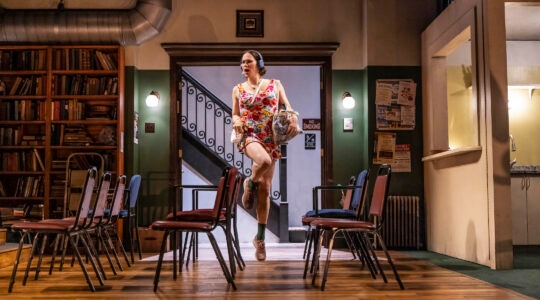April in Little Rock, Ark., brings a myriad of Southern blossoms, warm afternoons and a flowering of Jewish culture.
The Arkansan capital makes a diverting and attraction-rich stop for cross-country drivers on Interstate 40, which cuts across the United States from Wilmington, N.C., to Barstow, Calif. Already home to a prominent civil rights-era history, Little Rock has lately attracted tourists with Bill Clinton’s presidential library and museum.
One of the city’s marquee events is the annual Arkansas Jewish Food Festival, which will take place this year on April 27 at the War Memorial Stadium. I love that Arkansan Jews dispense with the notion that they are going to the party for some other reason than a daylong fress; they flat out call it a food festival, rather than an ethnic celebration — though there will of course be live music, children’s activities and more.
The annual festival attracts a large and diverse crowd; most of those who attend are not Jewish, which explains the enduring popularity of the event’s “Ask a Rabbi” answer booth. Noshing begins with bagels and blintzes at 8 a.m. and continues until evening, with Jewish flavors from the diaspora (Israeli salad, kebabs, kugels, cabbage pastry). There’s a daylong lineup of Jewish entertainers, from the Meshuggah Klezmer Band to a storytelling rabbi. A replica of the Western Wall invites visitors to submit their own wishes, while shoppers will find a variety of wares by Jewish artisans, from handmade jewelry and toys to fine- arts Judaica.
In a state known for its traditional, religious bent, Little Rock is home to three congregations: a Lubavitch shul and two historic synagogues founded more than a century ago. Congregation B’nai Israel, a Reform temple, dates to 1897, while Congregation Agudath Achim is 109 years old. Though neither remains in its original building, the longevity of synagogue life speaks to a community that blossomed with a turn-of-the-century influx of Eastern European Jews, many of whom sought opportunity by leaving Little Rock and moving west.
Of course, Little Rock is best known for a resident who found opportunity in the other direction: Bill Clinton, the 42nd U.S. president. When it opened in 2004, Clinton’s library and museum — located at the Clinton Presidential Center and Park — was the largest and most comprehensive of America’s presidential archives.
Most who visit are not scholars, of course, but tourists drawn by one of the most popular and controversial recent leaders — one who, with a wife still very much in the public eye, continues to fascinate. In addition to all the material you would expect, current exhibits include the spicy “Spies, Traitors and Saboteurs: Fear and Freedom in America” and “Presidential Pets,” sure to please fans of Socks Clinton and Bo Obama.
The Clinton Center is a cornerstone of the revitalized waterfront district known as River Market, which occupies the south shore of the Arkansas River. (In fact, the Clinton imprint is everywhere: on President Clinton Avenue, at the Bill and Hillary Clinton National Airport, and on innumerable souvenirs with the president’s likeness.)
The waterfront is actually one of Little Rock’s oldest and most historic areas, but by the time it was targeted for urban renewal in the 1990s, it had fallen into dereliction. Lovely old brick buildings were restored; the riverside park was tidied up; and the city’s Main Library reopened in a renovated warehouse.
In keeping with the neighborhood’s commercial roots, the facelift was capped by the opening of Ottenheimer Market Hall, a 10,000-square-foot indoor market with everything from locally roasted coffee to hot barbecue under one vaulted roof. On a more seasonal basis — specifically, from mid-spring through October — twin pavilions house the state’s premier farmer’s market, a twice-weekly showcase for local fruits, vegetables, flowers and artisanal products.
Across town, the Little Rock Central High School drew renown for its beautiful architecture when it was unveiled in 1927. The grand brick façade — with sweeping stairways and lacy white arches — suggests an august university rather than an urban high school, and design was its chief claim to fame until 1957, when it became the flashpoint in the national struggle over public school desegregation.
Since the school itself is still active, tours of the edifice are highly restricted and must be arranged well in advance. But in 2007, a Visitor Center opened on what is now the Little Rock Central High School National Historic Site. Travelers to Little Rock now have a user-friendly museum that gives context to the city’s important civil-rights legacy.
The New York Jewish Week brings you the stories behind the headlines, keeping you connected to Jewish life in New York. Help sustain the reporting you trust by donating today.




